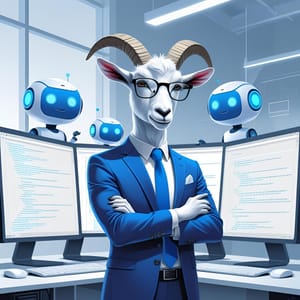Learn how Claude Code subagents create specialized AI teams for complex development. Complete guide with prompts, examples, and best practices.
Software development has evolved beyond single-developer heroics to collaborative team efforts, but AI assistance remained stubbornly single-threaded—until now. Claude Code's subagent functionality transforms AI from a sophisticated assistant into a specialized development team, where each member contributes domain expertise simultaneously across complex technical challenges.
Understanding Subagent Architecture and Capabilities
Subagents operate as autonomous AI entities within Claude Code's ecosystem, each maintaining independent context and specialization while communicating with the parent session. This architecture mirrors microservices patterns, where specialized components handle distinct responsibilities without interference.
The transformation becomes apparent when tackling multi-faceted problems. Traditional AI assistance forces context switching between database optimization, API security, and frontend implementation. Subagents eliminate this friction by creating dedicated specialists that work simultaneously, each maintaining deep focus within their domain.
Consider the difference: instead of asking Claude to "help with my web application," you orchestrate a team where the database architect focuses on schema optimization while the security specialist handles threat modeling and the DevOps engineer designs deployment strategies—all operating in parallel with domain-specific expertise.
Strategic Implementation with Advanced Prompting
Effective subagent orchestration requires sophisticated prompt engineering that goes beyond simple task division. The key lies in explicit role definition, context boundaries, and coordination protocols. Here's a proven pattern for complex project initialization:
Create three specialized subagents for microservices architecture:
1. Service Architect: Design inter-service communication, data consistency patterns, and service boundaries
2. Security Engineer: Handle OAuth flows, API gateway security, and service-to-service authentication
3. Infrastructure Specialist: Focus on container orchestration, service mesh configuration, and monitoring strategies
Each subagent maintains awareness of architectural decisions but operates independently within specialized domains.Advanced practitioners implement hierarchical subagent structures where a master coordinator manages multiple specialized workers. When modernizing legacy systems, the coordinator handles migration sequencing while worker subagents focus on specific modernization aspects—security remediation, performance optimization, and architectural refactoring.
Context inheritance represents another sophisticated technique. Subagents inherit specific aspects of parent context while maintaining independence in specialized domains. This prevents information silos while preserving focused expertise that makes subagents valuable.
It is also possible to use sub-agents to produce multiple results for the same query. This is a very useful way of opening up the range of possible solutions to a given problem, and then getting the best out of each one.
Analyze this legacy codebase for modernization strategy.
Deploy 2 subagents in parallel to produce competing refactoring approaches:
Subagent 1 - Incremental Modernizer: Design a gradual migration strategy maintaining business continuity. Justify each step based on risk mitigation and continuous delivery principles.
Subagent 2 - Complete Rewrite Advocate: Propose full stack modernization to Node.js/React with microservices architecture. Justify choices based on long-term maintainability and developer productivity gains.
Both subagents must provide: migration timeline, resource requirements, risk assessment, business impact analysis, and ROI projections. Each choice must be justified with concrete technical and business arguments.Token Economics and Resource Management
Subagents consume significantly more tokens than traditional interactions—a critical consideration for extended development sessions. Based on empirical testing patterns observed in the Claude Code community, each subagent maintains independent context windows, leading to multiplicative token usage. Sessions with three active subagents typically consume approximately 3-4x more tokens than equivalent single-threaded assistance, according to user reports in Claude development forums.
Smart resource management becomes essential. Implement subagent lifecycle management by terminating specialists when their expertise is no longer needed. This optimization balances comprehensive assistance with resource efficiency—reserve subagents for genuinely complex scenarios requiring parallel expertise.
Critical Limitations and Performance Implications
Context bleeding represents a subtle but important limitation. While subagents maintain independence, complex interactions can lead to unintended context sharing, potentially compromising specialized focus. Memory persistence across sessions remains inconsistent—unlike human team members, subagents restart fresh each time, requiring context re-establishment for ongoing projects.
Coordination overhead introduces latency compared to single-threaded interactions. Each subagent requires separate processing time, making them unsuitable for time-critical development tasks. The sweet spot lies in complex, analytical projects where thorough parallel analysis outweighs speed considerations.
Best Practices for Subagent Orchestration
Start with simple two-subagent configurations before attempting complex orchestrations. Focus subagents on genuinely distinct domains—natural boundaries like frontend/backend or security/performance create effective separations. Artificial division leads to coordination overhead without meaningful specialization benefits.
Implement regular synchronization points to prevent divergent solutions. Batch subagent interactions when possible rather than constant back-and-forth, reducing latency while maximizing parallel processing advantages.
Conclusion
Subagents represent a paradigm shift toward collaborative AI development assistance, transforming Claude Code from a sophisticated tool into a specialized development team. When properly orchestrated, they enable parallel expertise across complex technical challenges that define modern software development.
The most successful implementations combine clear role separation with explicit coordination protocols, treating subagents as domain specialists contributing to unified project success rather than arbitrary task divisions.
To go further, there is a great article about maximum parallelism:

Have a goat day 🐐



Join the conversation.